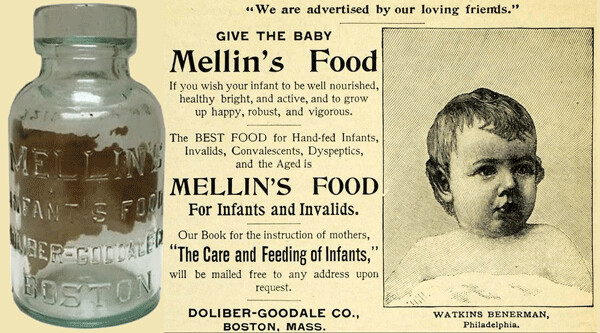News & Articles
Browse all content by date.

As a kid after we’d moved from windy Chicago to the windier North Shore I found a bottle. The young excel as sneaks, meaning I was a place on the premises I shouldn’t have been when I made my discovery. Most kids are much alike in one area; finding something unusual they’ll look it over. Initial exam might give a conclusion of “junk” to be dropped and passed over. If “junk” the object might be “fun” to destroy in the way some kids see a “weapon” to point or throw with fantastic destructive result.
Being kind hearted and mildly scientific as a boy I wished I’d had a younger brother with whom to share my find. Sharing included a particular curiosity to see if the thick glass might be a match for a younger brother’s skull. At the time I believed in an older brother’s obligation to toughen up the younger set. It never occurred to me that I’d be the younger one subject to older sibling ministrations because, frankly, mother’s miss carry before I appeared was not a common subject. Nor did I consider (despite the evidence of friends and cousins) than an older sister would be a formidable toughener-upper to contend with. I was confident of my place and felt sore deprived not having a younger skull for use in experiments.
But, back to the dirty thick greenish glass bottle I found. The heavily embossed bottle read MELLIN’S – INFANT’S FOOD – DOLIBER, COODEAL & Co – BOSTON. It was curious but not exciting as would be if the bottle said POISON or NITRO blow-things-up GLYCERINE. In fact the words INFANT’S FOOD seemed to beg for a younger brother, but no such fortune for little me at the time. Lacking a brother’s head handy I put the bottle away for possible future use but knowing the old people in my house better get busy if I was going to enjoy tossing a toddler over a fence before leaving home for the big world of earn book and tuition money.
In time I’d learn that bottle had more to tell than its inscription. The quality and thickness of the glass had stories of origin clear to an experienced eye as details of mold line and other features disclosing a period in the industrial era. I was glad my boyhood find survived temptations to use it as a skull tester or send it to its death in target practice. (Slim ketchup and sauce bottles were a good test for a young eye.) Over time, too, I came to grasp a thing simple and unquestioned as infant food (formula) had great import to parents in the days when infant mortality was common. In addition it became apparent that the supposedly ignorant and un-modern older generations were wise enough to employ infant food to bolster the infirm and aid the elderly. The past uses differing terms for things but shows a similar attention to health and survival.
I’ve no idea why some, however coincidently, become interested in the things bits and pieces have to say about the world or about us. We’re told, often with a vibration of religious fervor, to live in the present. Embrace the now and don’t dwell in the dead past. Look to the future. Be visionary and progressive. Avoid the snares of the regressive past. But where does the future come from if not right out of the past? A successful invention or idea is often built on a string of earlier notions and failed attempts that if ignored or removed destroy the sequence.
We can be fairly sure, however, that searching the past can become overly nostalgic and trivial. By being known the past is safe territory. It is less stressful and more soothing to be rocked in the cradle of comforting history some of which, must be said, is inconsequential and of limited practical use. What value is in a beach find stamped ALFRED J. KRANK – ST. PAUL? Could it be a piece from the nearby 1880’s wreck of the Mary Martini once a Superior/Duluth ferry? It turns out not so exciting as that. From around 1910 to 1920 Mr. Krank of St. Paul made and sold hair root oil. Unless he had a time machine no bottle of his oil was on an 1880’s wreck. But the Krank timeline does fit the time the first summer cabin was built on this property. On a scale of importance Krank hair oil won’t do well, but it’s more interesting knowing about it and that a weathered remnant survived to add a small bit to the human story of commerce and of human vanity in hair grooming. Krank died in 1928 but the story of commerce and grooming begins millennia before his time and remains strong today. Much of humanity relies on commercial trade and much of humanity (excepting masked militants and protesters) wants to go through daily life appearing groomed. The Krank story is small. The overall context is not.
I’ve noticed a difference in people. Some discard Mellin’s and Krank as junk quickly as they encounter it. The present and future are what they hold important. So thinking they will not be paused by trivial nothings; good for them. But I’d not count on a solid future if it’s not built on a factual or realistic foundation. Ideals are generally peaceful, often gloriously so. The expression of ideals, however, is frequently brutal. All the bits of the past are part of the story, but which are important and which essential? The mindset (I call it the JK Rawlings view) that overlooks details in favor of waving a magical wand has two commonly disastrous results we see almost daily in people asserting “bomb them” in one stance and “love them” in another. Placing a ban on violence or hatred means nothing to a view willing to achieve its ends by use of those or any other means. Saying Love Thy Neighbor won’t turn hostility into daffodils and roses because we wish it to. Bits and pieces tell a story. Not paying attention to details is a tale of emptiness.
| Tweet |


